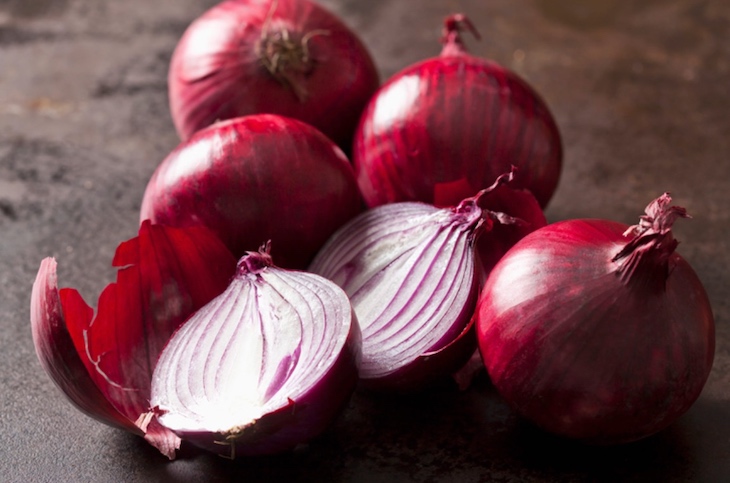In the 2020 Salmonella Newport outbreak linked to red onions, more than 1600 people were sickened in the U.S. and Canada, with 1,127 sickened in the United States alone. Red onions from Thomson International were the likely source of this outbreak, although the government could not identify a conclusive root source of the contamination. Why were red onions contaminated with Salmonella?

This was the largest Salmonella outbreak in over a decade in the United States. The FDA has released a report which may supply some answers about why this outbreak happened
So why were red onions contaminated with Salmonella bacteria? There were several potential contributing factors that may have caused the contamination. They include potentially contaminated source of irrigation water; sheep grazing on adjacent land; signs of animal intrusion, including scat and large flocks of birds; and food contact surfaces that had not been inspected, maintained, or cleaned as often as necessary.
The FDA found Salmonella Newport in sampling conducted on the Thomson International Holtville, California growing site, but whole genome sequencing found this was not the outbreak strain. The bacteria was found in irrigation, seepage, and drainage, and one sediment subsample.
The leading hypothesis is that contaminated irrigation water was used in the Holtville fields. Thomson International cooperated with the FDA throughout the investigation and is still working with the government on the agency’s findings and recommendations.
In the wake of this report, the FDA is encouraging growers to take steps to help reduce the risk of contamination of produce. First, all farms should assess growing operations to make sure they are applying risk-based preventive measures, including provisions of the Food Safety Modernization Act Produce Safety Rule. Second, growers should implement industry-led root-cause analyses to determine how contamination occurred when pathogens are identified in their products.
Farmers should also be aware of and consider risks that may be posed by adjacent and nearby land use, especially in relation to the presence of livestock and the interface between farmland, rangeland, irrigation water, and other agricultural areas. In addition, farms should consider using tools such as pre-havest or post-harvest sampling and testing of products.
Finally, farmers need to improve traceability by increasing digitization, interoperability, and standardization of traceability records, and follow good agriculture practices to protect the quality of the water they use on crops.

If you or a loved one have been sickened with a Salmonella Newport infection after eating recalled onions, please contact our experienced lawyers for help at 1-888-377-8900 or 612-338-0202.




